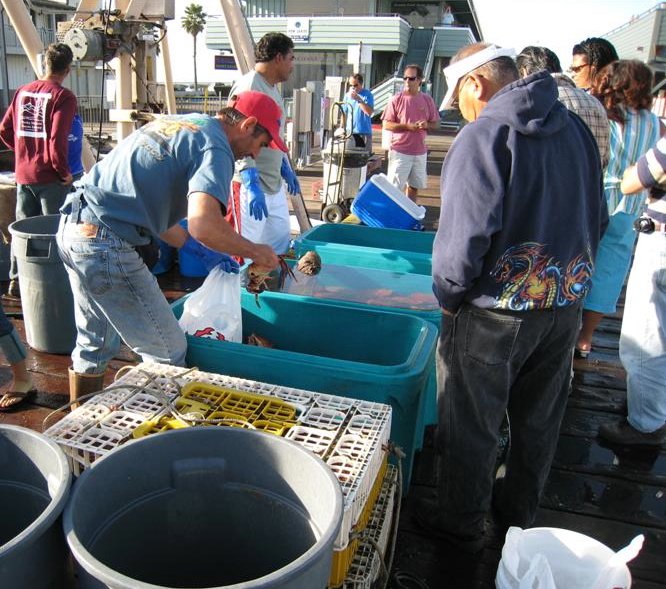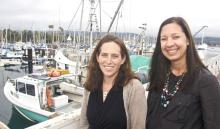

The "locavore" movement is helping America's farmers. Could it also help our fishermen?
A new study led by a UC Santa Barbara researcher will look at whether new business models stand to benefit the region's fishing communities. The two-year project is being funded as part of a $1 million West Coast Sea Grant social sciences research initiative, supported by NOAA Sea Grant and its partners.
The emphasis will be on developing a tool kit to help fishermen in Washington, Oregon, and California learn about direct marketing, and identify approaches that might be the most appropriate for the local fisheries and consumer base.
"With the Sea Grant award, we will be able to systematically investigate the upsides and downsides of direct marketing of seafood and tailor the results specifically to West Coast fisheries and fishing communities," said Barbara Walker, the project's lead investigator. Walker is a cultural geographer and director of research development for the social sciences, humanities, and fine arts in the Office of Research at UCSB. "There are a lot of successes with community-supported fisheries, but at the same time, there are programs that are struggling."
Based on the community-supported agriculture model, a community-supported fishery (CSF) is a program that connects local fishermen to a local market. CSF members buy shares in a fishery in exchange for weekly or biweekly deliveries of locally caught, premium seafood. In other direct marketing arrangements, fishermen may sell catches to the public directly off of their boats, at farmers markets, or through prearranged deals with restaurants.
"Many West Coast fishing communities are considering direct marketing strategies because there are a lot of perceived benefits," said co-investigator Caroline Pomeroy, a California Sea Grant Advisor. "We want to objectively evaluate the actual benefits and costs, and what it takes for such programs to succeed. Our goal, ultimately, is to provide fishermen and fishing communities with scientifically sound information they can use to make decisions that give them the best possible chance of success."
California Sea Grant Advisor Carolynn Culver and Kimberly Selkoe, a researcher with UCSB's Marine Science Institute, are also co-investigators. Sea Grant programs in Washington, Oregon, North Carolina, and South Carolina are collaborators on the project.
Later this month, the research team will begin conducting case studies of direct marketing programs on the East Coast, where many of the more established community-supported fishery programs began, and on the West Coast, where, in general, direct marketing of seafood is a newer concept.
"A lot of fishermen are having to fish smarter, not harder, to survive," said Amber Von Harten, a fisheries outreach specialist at South Carolina Sea Grant Consortium and a collaborator on the project. "However, direct marketing is not for every fisherman."
"The case studies will focus on identifying the opportunities and challenges of establishing and maintaining direct marketing programs, and focus on helping fishermen understand how adopting such a new business model might change their daily lives," said Pomeroy.
"We want to know how direct marketing changes how people fish," Walker explained. "Do fishermen's incomes go up? How do their workloads change? What are the social and economic implications for them and consumers?"
Findings from the case studies will be used to craft a tool kit to help fishing communities assess direct marketing options, and then select ones that are most likely to thrive. The tool kit will be tested in Santa Barbara and in Coos Bay, Ore., where fishing groups are considering direct marking programs. In the project's final stage, the team will convene outreach seminars to disseminate the tool kit and share study results with West Coast fishing communities.
"I'd like to see this project evolve direct marketing from something individual fishermen do, to something that whole communities get behind," said Pete Granger, a collaborator on the project, and the leader of Marine Advisory Services at Washington Sea Grant. "This means ports, processors, and local residents would be involved."
† Top photo: Kimberly Selkoe, left, a researcher at the Marine Science Institute, and Barbara Walker, a cultural geographer and director of research development for the social sciences, humanities, and fine arts in the UCSB Office of Research, at Santa Barbara Harbor. Not pictured are researchers Carrie Pomeroy, and Carrie Culver, both of California Sea Grant.
Credit: Rod Rolle
Related Links



